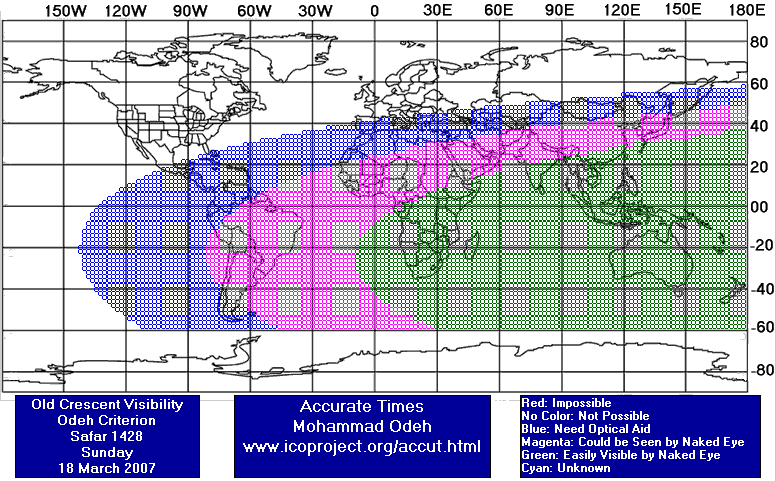Visibility of Rabee Awwal Crescent
(1428 AH)
- When to Observe Rabee Awwal Waxing (NEW) Crescent ?
- Rabee Awwal Waxing (NEW) Crescent Observation Results
- The OFFICIAL First Day in Different Countries
- ICOP Official Statement
- When to Observe Safar (OLD) Crescent ?
- Safar Waning (OLD) Crescent Observation Results
The geocentric conjunction (Geocentric New Moon) will occur Inshalla on (Monday 19 March 2007) at
02:43 UT.
Sighting the new crescent on (Monday 19 March 2007) is shown in the below graph using the program Accurate Times by Mohammad Odeh according to Odeh criterion. Where:-
According to the Universal Hejric Calendar (UHC), which is based on the calculated crescent visibility, the start of this month in the Eastern Region will be on Tuesday 20 March 2007, and in the Western Region will be on Tuesday 20 March also.
- Results of seeing the crescent, and the first day of the month in different countries will be added here Inshalla as we receive the reports from ICOP's members. If you wish to be a member in ICOP, or to know more about it, kindly click here.
So far, the earliest sighting of the crescent was on Monday 19 March 2007 from USA.
Monday 19 March 2007:
Tuesday 20 March 2007:
Tuesday 20 March 2007:
Wednesday 21 March 2007:
The geocentric conjunction (Geocentric New Moon) will occur Inshalla on (Monday 19 March 2007) at
02:43 UT.
Sighting the OLD crescent on (Sunday 18 March 2007) is shown in the below graph using the program Accurate Times by Mohammad Odeh according to Odeh criterion. Where:-
When to Observe Rabee Awwal Waxing (NEW) Crescent ?
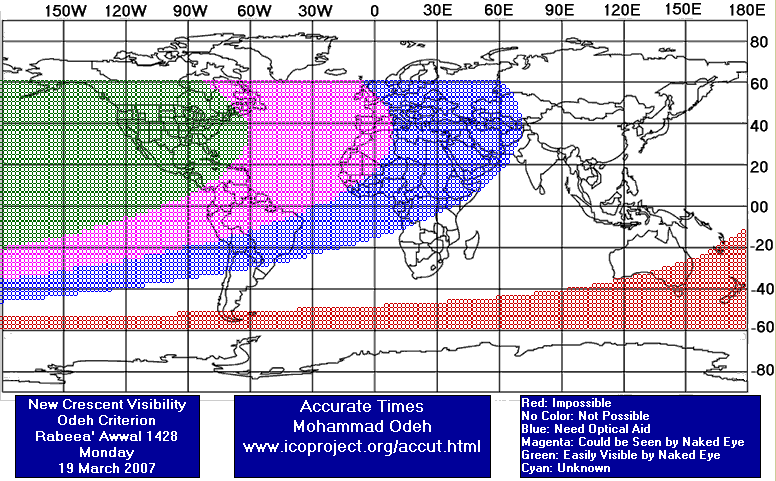

Rabee Awwal Waxing (NEW) Crescent Observation Results
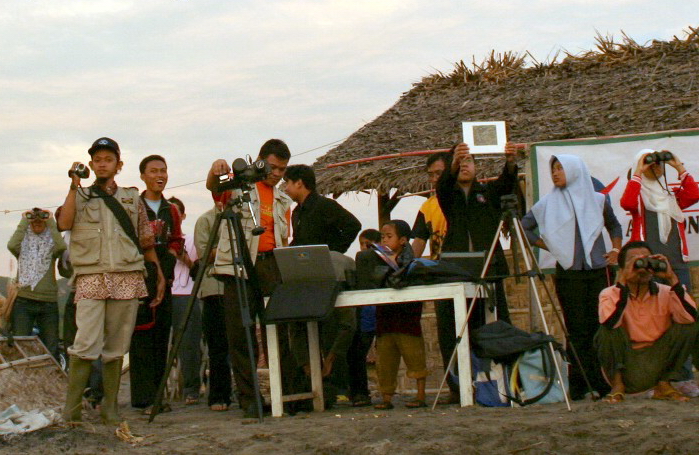
By Mutoha MMC on Monday 19 March 2007
Weather Condition as follows:
Condition: Clear / 61 Deg.F.
Sunset: 7:03pm
Humidity: 65%
Wind: WNW at 6 mph
Pressure: 30.01 in.
Visibility: 10.0 miles"
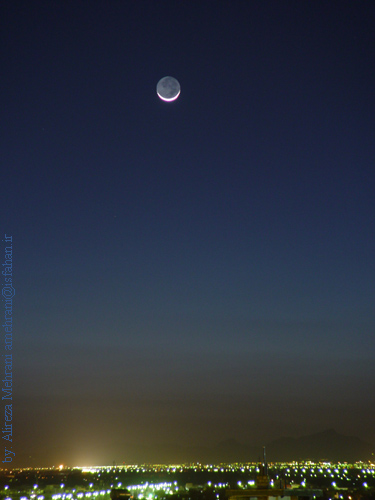

(Click on the Photo for Larger View)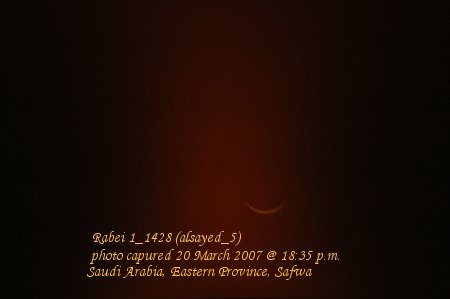
By Edrees Al Shubbar on Tuesday 20 March 2007
The OFFICIAL First Day in Different Countries

ICOP Official Statement

When to Observe Safar Waning (OLD) Crescent ?
